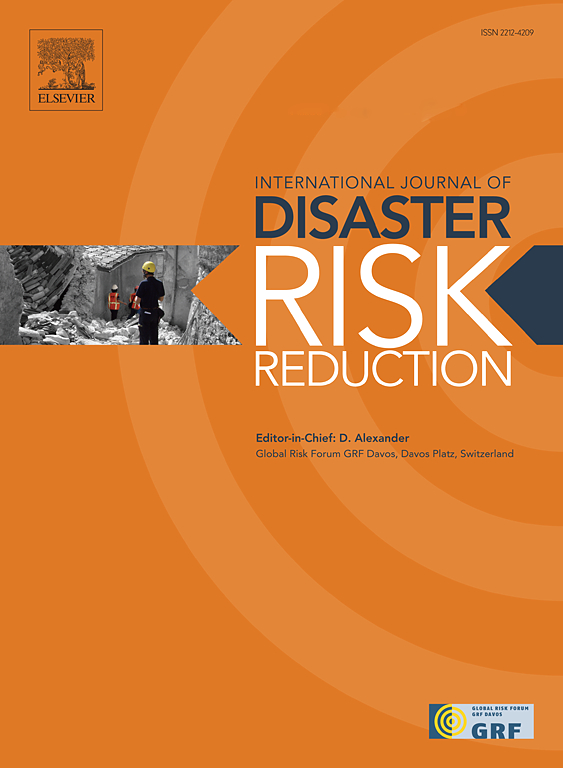A critical review on measurement tools of urban household and community resilience to disasters and environmental shocks and stressors among low- and middle-income countries: Theory, application, and guidance
IF 4.2
1区 地球科学
Q1 GEOSCIENCES, MULTIDISCIPLINARY
International journal of disaster risk reduction
Pub Date : 2025-01-31
DOI:10.1016/j.ijdrr.2025.105267
引用次数: 0
Abstract
With increasingly severe weather events compounded with additional disasters, environmental shocks and stressors, and socio-economic challenges, there is a growing sense of urgency to build resilience, resulting in the need for assessment tools. We conducted a review of empirical studies that measured household and community resilience to environmental shocks and stressors among urban populations in low- and middle-income countries. This review was conducted to 1) understand how empirical studies measure resilience, 2) identify gaps in current practices, and 3) provide theory-informed recommendations to bridge gaps. Our review included 28 studies of which 25 measured community level resilience and three measured household-level resilience. The studies measured resilience against climate change, disease outbreaks, earthquakes, floods, food insecurity, and disasters. The 751 extracted measures from these studies focused on social (45 %), environmental (34 %), and economic (21 %) domains of resilience. Our review revealed that assessment tools often erroneously use measures of vulnerability (example: age distribution, frequency of shocks/stressor) to assess resilience and sub-domains are inconsistently used to characterize resilience across existing measures. Furthermore, capacity measures (i.e., adaptive, absorptive, and transformative) that reflect the dynamic nature of resilience are inconsistently used. We provide guidance on filling these gaps by 1) informing the development of measures, 2) providing an adapted measurement framework for urban household-level resilience against disasters and environmental shocks and stressors for use in LMICs, and 3) making recommendations for how to contextualize the framework.
求助全文
约1分钟内获得全文
求助全文
来源期刊

International journal of disaster risk reduction
GEOSCIENCES, MULTIDISCIPLINARYMETEOROLOGY-METEOROLOGY & ATMOSPHERIC SCIENCES
CiteScore
8.70
自引率
18.00%
发文量
688
审稿时长
79 days
期刊介绍:
The International Journal of Disaster Risk Reduction (IJDRR) is the journal for researchers, policymakers and practitioners across diverse disciplines: earth sciences and their implications; environmental sciences; engineering; urban studies; geography; and the social sciences. IJDRR publishes fundamental and applied research, critical reviews, policy papers and case studies with a particular focus on multi-disciplinary research that aims to reduce the impact of natural, technological, social and intentional disasters. IJDRR stimulates exchange of ideas and knowledge transfer on disaster research, mitigation, adaptation, prevention and risk reduction at all geographical scales: local, national and international.
Key topics:-
-multifaceted disaster and cascading disasters
-the development of disaster risk reduction strategies and techniques
-discussion and development of effective warning and educational systems for risk management at all levels
-disasters associated with climate change
-vulnerability analysis and vulnerability trends
-emerging risks
-resilience against disasters.
The journal particularly encourages papers that approach risk from a multi-disciplinary perspective.
 求助内容:
求助内容: 应助结果提醒方式:
应助结果提醒方式:


